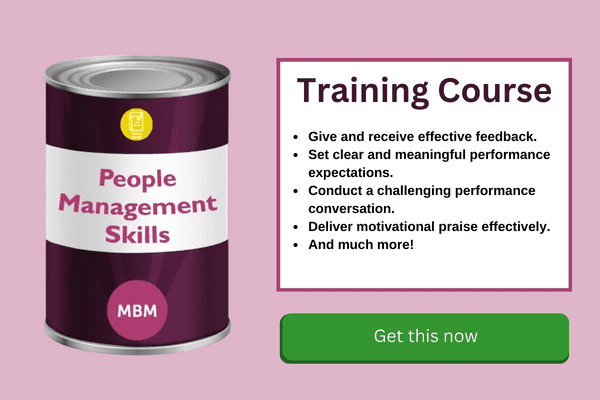What Are Your Human Resource Goals and Objectives for the Year Ahead?
In a report by the Society for Human Resource Management (SHRM), HR professionals highlighted several challenges. Notably, issues such as maintaining employee engagement, developing leaders, and providing competitive compensation were at the forefront. These challenges significantly shape a company’s human resource goals and objectives.
A significant challenge highlighted by many professionals is executing HR processes with limited resources. Looking ahead, HR professionals foresee these challenges persisting. Issues like talent acquisition and resource allocation are expected to remain prominent over the next decade.
Furthermore, the SHRM report underscores executives’ call for HR to refresh its strategies to better align with business goals. They emphasise the importance of HR’s engagement with leadership in strategy development and implementation. Additionally, executives hold HR accountable for providing innovative solutions and driving financial growth.
In this article, we’ll delve into the multifaceted landscape of HR planning, tackling challenges such as resource constraints, employee dynamics, and leadership buy-in. Additionally, we’ll explore the crucial role of persuasion in garnering support for HR initiatives and driving organisational success.
Join us as we navigate through these challenges and provide actionable strategies, backed by insights from leading management experts like Dr. Susan Heathfield, Professor John Boudreau, and Dr. Wayne Cascio, to develop robust human resource goals and objectives for the year ahead.

Assess HR’s Current State
You will likely encounter similar obstacles in your organisation, and these challenges will continue to grow in 2024 and beyond. It’s crucial to develop an HR strategy and set clear, achievable human resource goals and objectives.
Before beginning the human resource planning process, you should take time to evaluate the previous year. Understanding important lessons from past mistakes is essential. What you uncover may lead to redefining many of HR’s practices.
One major challenge is that HR professionals sometimes lack a deep understanding of the business. HR must be familiar with the company’s core principles and values that make it unique. Additionally, HR needs to speak the language of the business to align talent goals with the company’s priorities.
Challenges When Starting the HR Planning Process

#1- Resource Constraints:
One of the primary challenges in HR planning is dealing with resource limitations. HR departments often face constraints in terms of time, budget, and personnel. Limited resources can hinder effective planning and execution.
Dr. Susan Heathfield, a renowned HR consultant, emphasises the impact of resource constraints on HR planning: “Effective HR planning requires balancing limited resources with organisational needs. Prioritise initiatives that yield the highest return on investment.” To mitigate this challenge, consider prioritising critical tasks, allocating resources strategically, and seeking ways to optimise efficiency.
Example: Imagine an HR department in a small startup. They have only one HR manager who handles recruitment, employee relations, and benefits administration. With limited time and resources, the HR manager must prioritise critical tasks. They might decide to automate routine processes (like leave requests) to free up time for strategic planning.
Sticky Learning ® is 7 times more effective than 1-day training courses. Plus, you will get a Chain of Evidence proving your Return on Investment. Discover soft skills training that changes behaviours long term.

#2- Employee Dynamics:
HR departments frequently encounter interpersonal conflicts among employees. These conflicts can disrupt the planning process and affect team dynamics. According to a Gallup study, teams with high employee engagement are 21% more productive than disengaged teams.
Addressing employee dynamics positively contributes to engagement and overall team performance. To address this challenge, HR professionals should actively promote a positive work environment, encourage open communication, and mediate conflicts promptly. Additionally, fostering a culture of collaboration can help prevent such issues.
Example: Consider a mid-sized company where two team leads constantly clash. Their disagreements affect team morale and productivity. The HR team needs to address this conflict during the planning process. They might organise team-building workshops, facilitate open dialogues, or also consider restructuring teams to minimise friction.
#3- Leadership Buy-In:
Convincing organisational leaders of the importance of HR objectives can be an uphill battle. Some leaders may prioritise other business functions over HR initiatives. To overcome this challenge, gather data and evidence that demonstrate the impact of effective HR planning on overall organisational success. Use metrics such as employee retention rates, productivity improvements, and cost savings to make a compelling case. Professor John Boudreau, a leading HR researcher, advises: “Leadership buy-in is critical for successful HR planning. Use data-driven arguments to demonstrate how HR initiatives impact the bottom line.”
Example: In a large corporation, the HR director wants to implement a comprehensive wellness program. However, the CFO is sceptical about the ROI. To gain leadership buy-in, the HR director compiles data showing that healthier employees take fewer sick days, resulting in cost savings. She presents this evidence during a leadership meeting.
#4- Balancing Best Practices and Context:
With little time available for planning, you may be tempted to rely on others’ success. You must be careful when using others’ input to create human resource goals and objectives. Each company has its own culture, workforce, and challenges.
The Society for Human Resource Management (SHRM) reports that organisations that customise HR practices to their context experience higher employee satisfaction and retention rates. Therefore, tailor HR goals and strategies to align with your specific situation. Conduct a thorough analysis of your business needs, employee demographics, and industry trends before setting objectives.
Example: Suppose an e-commerce company wants to improve employee engagement. While researching best practices, they found that flexible work hours boost morale. However, they also know that their customer service team needs fixed schedules. Instead of blindly adopting the best practice, they tailor it: customer service reps get fixed hours, while other teams enjoy flexibility.
#5- Imperfect Forecasting:
Predicting future workforce needs accurately is challenging due to various uncertainties (e.g., market fluctuations, technological advancements, and unexpected events). HR planning relies on forecasting, but no forecast is perfect. Dr. Wayne Cascio, a distinguished HR scholar, highlights the importance of agility: “Imperfect forecasting requires HR professionals to adapt swiftly. Monitor trends, stay informed, and be prepared to pivot when needed.” To mitigate this challenge, use scenario planning, sensitivity analysis, and continuous monitoring. Be agile and ready to adjust your plans as circumstances evolve.
Example: A retail chain plans to expand to new locations. They estimate hiring needs based on sales projections. However, unexpected economic downturns impact sales. To adapt, they use scenario planning: “What if sales drop by 20%?” They prepare contingency plans, such as cross-training employees for multiple roles.
#6- Resistance to Change:
Employees may resist internal changes related to HR planning. Whether it’s implementing new policies, restructuring teams, or introducing performance metrics, resistance can hinder progress. Communication and change management are crucial here.
A Harvard Business Review study found that involving employees in change initiatives increases the likelihood of successful implementation by 30%. So, include employees early in the process, explain the rationale behind changes, and address their concerns. Create a sense of ownership and collaboration to minimise resistance.
Example: An established manufacturing company decides to implement performance metrics for production line workers. Employees are wary of the change. The HR team holds town hall meetings, explaining how metrics can lead to fairer evaluations and better career growth. Moreover, they involve employees in designing the new system, fostering ownership and reducing resistance.
Beginning Stages of Creating Your HR Plan

Now that you understand some of the challenges associated with human resource planning, it’s time to create your plan. Here are some key areas to consider when setting your human resource goals and objectives.
1. Get Input From Employees
You’ve probably heard this already, but remember that HR is all about people. Consider input from your organisation’s staff. Listen to the employees when developing an HR strategy. Research by McKinsey suggests that transformations are four times more likely to be successful when influential employees are involved. These influential individuals have a strong voice within the organisation, meaning they are trusted, respected, and sought after for advice. Identifying these influencers can significantly impact change success.
Ask open, honest questions. Even if the answers are difficult to hear, these types of questions are the best way to get the feedback you need.
By listening to your employees, you can create a custom plan for your organisation. Your employees are unique. They each have their own strengths and weaknesses, and your plan needs to work for all of them.
Understand your employees’ needs by using surveys. Surveys can measure culture and employee sentiment effectively. Act on the feedback you receive, and be flexible with your methods as your company grows and changes.
2. Build Relationships With the Staff
Don’t just solicit feedback from your employees; also invest in building genuine relationships with them. Help them understand their value and how they fit into the company’s “why.”
Build relationships with key individuals. While a strong relationship with your leadership team is essential, other employees can also serve as valuable liaisons to HR. Renowned leadership scholar Warren G. Bennis emphasises the importance of earning trust before engaging stakeholders: “Leaders must earn the trust of their teams, their organisations, and their stakeholders before attempting to engage their support.”
Middle management often has a clearer understanding of the company culture than executives. Employees who interact with various departments can provide insights into how different divisions perceive each other. Even those in more modest positions can offer valuable perspectives on staff engagement.
3. Involve Your Company’s Leadership
Your HR strategy needs the leadership and support of the company’s executives. Involve business leaders in both the planning and implementation phases, helping them understand the value of people beyond just their impact on the business.
Communicate effectively with your team. Hold executive meetings to discuss relationship-building both internally and externally. Gather input and secure buy-in from everyone on the team, and schedule follow-up meetings to review assigned tasks.
By involving leadership, you ensure that employees are held accountable and more likely to support human resource goals and objectives. The team needs to recognise that workforce, operational, and customer success are just as important as traditional performance metrics.
Set Human Resource Goals and Objectives

You now have the foundation for creating an HR strategic plan. The preparation you’ve made will help you define clear human resource goals and objectives. Let’s get into some of the specific areas where you can make a real impact on the business.
1. Maintain Adequate Staffing
According to a Forbes Advisor study, companies with effective talent acquisition strategies are 21% more likely to outperform their peers financially. Adding staff to the organisation is a fundamental HR function, and it’s important to regularly revisit the organisation’s staffing needs. Design an organisational structure and identify areas that require new hires.
Determine the ideal type of employee for each role and ensure you recruit the right people. Compete to acquire top talent that aligns with the company’s goals and objectives, as well as your human resource goals and objectives.
Reviewing the previous year can greatly inform your staffing needs. Consider questions like who was let go and why? Who left and why? Did employees leave for competitors?
Many HR professionals agree that finding talent is challenging. To retain your top talent, create incentives that are both competitive and creative, offering perks that stand out in the job market.
2. Hiring and Onboarding Practices
Another area where reflecting on the previous year can be beneficial is in learning from those who left due to unclear expectations or inadequate training. Conducting pre-employment background checks can help identify potential concerns.
Set up procedures to ensure that new hires have positive first impressions. Take their feedback into consideration from the beginning to address any issues and set clear expectations for their roles and training.
Let candidates experience the work environment firsthand and utilise assessment tools to determine their fit. Encourage managers to thoroughly review job descriptions and conduct behavioural interviews to assess cultural fit.
After hiring, pair new employees with engaged, experienced mentors within the company, especially across departments. Select a training company that understands your industry, as trainers with industry experience have a greater impact.
Trainers familiar with your business can design progression plans for employees, optimising your business with an understanding of available resources and employee capabilities.
4. Facilitate Change Management
Kurt Lewin, a pioneer in social psychology, famously said, “No research without action, no action without research.” Limit change to a few initiatives when building human resource goals and objectives. Concentrate on high-value, easy-to-implement changes first. Ask: How valuable is this change? How easy is it to implement?
Remember to think about the customer when implementing changes. Ask: Will this change improve the customer experience? Will this change satisfy the needs of our customers?
5. Improve Employee Engagement
According to a Forbes Advisor study, engaged employees are 21% more productive and have 59% lower turnover. Make sure your organisation doesn’t forget about employees at the end of the fiscal year. Businesses are then often concentrated on meeting sales, production, or distribution goals. Employee disengagement costs billions each year in lost productivity.
You can schedule engagement events. Have HR one-on-one meetings to discuss employee needs. Continue to make sure your employees feel valued and feel like they can have an impact on the business. Even small changes and initiatives can change the culture for the better.
SMART Human Resource Goals and Objectives

Now that we’ve discussed the foundational aspects of HR strategic planning, it’s crucial to ensure that your goals align with the SMART framework. Setting Specific, Measurable, Achievable, Relevant, and Time-bound objectives will empower you to make a tangible impact on the business.
Research conducted by Dr. Gail Matthews at the Dominican University of California underscores the effectiveness of SMART goals, revealing that individuals who adhere to this framework are 42% more likely to achieve their objectives. This highlights the power of structured goal-setting in driving successful outcomes. Now, let’s explore specific areas where you can apply these principles to foster HR success.
1. Specific:
Define clear and precise objectives that address specific HR needs. For example, instead of a vague goal like “improve employee engagement,” specify a goal such as “Increase employee engagement survey scores by 10% within the next year.”
2. Measurable:
Establish quantifiable metrics to track progress and success. For instance, measure turnover rate, employee satisfaction scores, or training completion rates to gauge the effectiveness of HR initiatives.
3. Achievable:
Ensure that goals are realistic and attainable within the organisation’s resources and constraints. For example, aiming to reduce turnover by 50% in a year might not be feasible, but reducing it by 10% could be more realistic.
4. Relevant:
Align HR goals with the broader strategic objectives of the organisation. For instance, if the company aims to expand into new markets, HR goals could include recruiting and retaining talent with experience in those markets.
5. Time-bound:
Set specific deadlines to create a sense of urgency and accountability. For instance, establish quarterly or annual targets for implementing diversity and inclusion training programs or launching performance management initiatives.
Power of Persuasion

Leadership is influence.” – John C. Maxwell
After establishing your human resource goals and objectives, you’ll need leadership’s support. Once they’re on board, you’ll have to get your employees to support it as well. It’s not enough to write a killer plan. You need to “sell it” too.
What to Avoid
Avoid being intimidating or using authority to coerce others into adopting your plan. Simply repeating the plan over and over is also ineffective. Instead, focus on building consensus and understanding among team members.
Maintain a balanced level of enthusiasm when sharing your human resource goals and objectives, avoiding excessive excitement that may come across as insincere. Be genuine and positive in your communication. Listen actively to others’ feedback and only speak when necessary. Avoid over-explaining, as it could lead to resistance or scepticism towards your plan.
Persuade Effectively: Strategies for Success
Commitment and Consistency
When it comes to achieving your human resource goals and objectives, consistency is key. Once you’ve outlined your plan, stick to it. If you’ve gathered ideas or feedback from others, honour those commitments. Whether it’s implementing changes by a specific date or following a particular approach, maintaining consistency builds trust and credibility.
Put It in Writing
People are more likely to uphold their commitments when they are documented. After discussions or agreements, consider sending a follow-up email summarising the key points. This not only reinforces the commitment but also provides a reference point for everyone involved.
Back It Up with Evidence
To persuade effectively, provide evidence that supports your ideas. This evidence can come from various sources:
- Success Stories: Share examples of how similar strategies have worked in the past. Highlight achievements from other organisations or teams.
- Expert Opinions: Reference insights from well-known authorities, books, or trade magazines. Citing reputable sources also adds credibility to your proposals.
- Internal Support: If your colleagues or team members have expressed support for your human resource goals, mention their endorsement.
Enhance Your Persuasion Skills
If you find persuasion challenging, consider investing in training. Making Business Matter offers training on influencing skills. From mastering body language to adopting an assertive approach, these skills can help you effectively convey your ideas.
Remember, effective persuasion isn’t just about convincing others—it’s about building lasting commitment. By following these strategies, you’ll be well on your way to achieving your human resource objectives.
Finally
Having a clear plan of human resource goals and objectives is crucial for the success of your HR strategy. While the process may seem daunting, remember that you are not alone. Engaging your leadership team and involving your staff can significantly contribute to the development and implementation of your HR plan.
Additionally, as we discussed in the article, HR professionals often face challenges like maintaining employee engagement and developing leaders. Addressing these effectively can lead to substantial improvements.
Finally, by setting clear goals and persuading others to support your initiatives, you lay the foundation for a resilient HR strategy. Start working on your plan today. Moreover, for more insights and detailed guidance, read our blog or sign up for one of our elite HR and Leadership Courses. Together, we can turn challenges into opportunities and drive your organisation toward greater success.
Updated: May 2024 by Farah Yasser Salama




